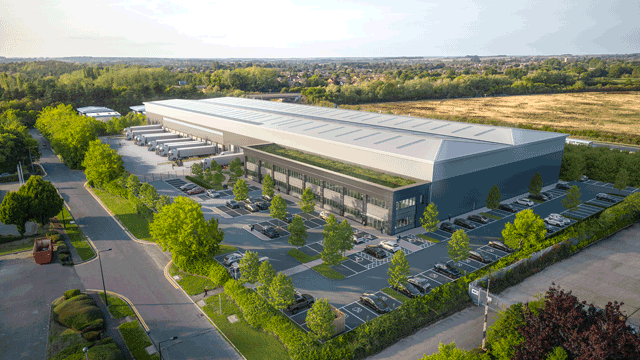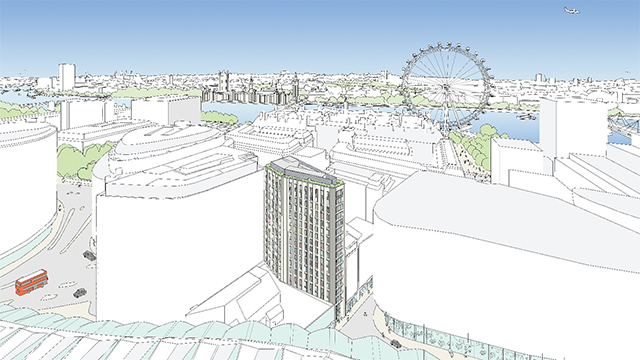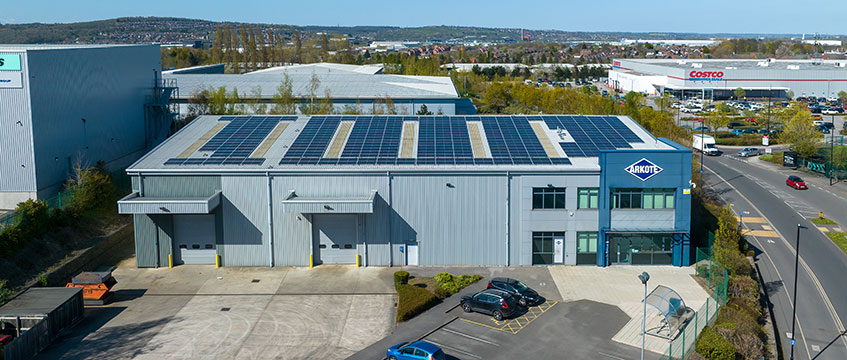Imagine it is the year 2021. What do you think the UK’s high streets will look like? Dominated by banks? No music or book shops? Filled with supermarket chains? Eradicated by large in-town centres? Or totally non-existent? Looking in to their crystal balls, and using a combination of imagination, market research and statistics, a prominent developer, retailer, agent and architect give their impressions of how the high street will look in 10 years’ time.
Fiona Hamilton, director, retail, Jones Lang LaSalle
When walking down my local high street in Paisley, I am saddened to see rows and rows of empty shops, pound stores, bookies and shabby cafés.
This appears to be the norm nowadays – such a difference from the once bustling high street of 10 years ago.
The lure of nearby competing shopping centres and the appeal of cheap and cheerful retail parks are all too apparent, but this situation has been exacerbated by the continuing rise in e-commerce, m-commerce, VAT and tightening consumer spend.
So we need to ask: is there any way we can stop the rot?
The government has called on Mary Portas to examine our nation’s high street trading, but I fear that this exercise might result in nothing more than a “fly on the wall” reality-style television review. The death of our high street is no laughing matter and needs to be tackled head on.
The nation’s shoppers are generally portrayed as lacking interest in our high streets, but the British Retail Consortium recently produced evidence to the contrary.
Virtual experience
We must hope that in the future, the high street will be more than just a physical place to shop, and that it will provide a mixture of the real and virtual experience for a wide social population.
But, in the current environment, how can we achieve this?
The coalition government needs to look at other countries which are facing similar issues, and there are plenty of examples.
In Spain, for instance, the government has become involved in renovation projects in large cities that are underperforming in terms of local culture and retail offer.
Economically, retailing should be treated on the same level as manufacturing.
The government could create a strategic masterplan to identify high street enterprise zones. This would allow for innovative financial interventions and provide a unique selling point so that retailers would be encouraged to multi-channel trade.
There is no doubt that the future belongs to those retailers best able to combine stores with an online presence, but we need to give retailers a reason why, on a cost basis, they should consider occupying traditional high street locations.
Policies to consider include:
• TIF (Tax Incremental Funding)
• Public realm work to kick-start impoverished areas
• Entrepreneurial retail start-up tax relief and grants
• Assisting with faster internet connection.
Retail remains a very dynamic sector and, currently, there are numerous new concepts, including:
• Pop-up stores (like the Dr Marten’s in Old Spitalfields, London, above)
• Quirky independents
• Experiential retailing (try before you buy)
• Multi-channel retailing
• The ongoing growth of the bargain store
• Social marketing place ideas
• Shop within shop, shop sharing (such as Primark trading within Co-Op stores)
• Return of the basket shop to the high street.
If the high street could adopt some of these concepts we might no longer be referring to its demise.
So my vision for the high street is rosy – if we can encourage the government to become involved and consider the needs of the consumer.
Richard Akers, Land Securities’ managing director for retail, and BCSC president
This is a complex issue, essentially a Rubik’s Cube, as there are many sides to it and it is difficult to solve. It is also very difficult to generalise as every town centre is unique in its character and the specific challenges facing it. There are, however, some common threads:
High streets in small and medium-size towns have fared relatively badly compared to big city, out-of-town and internet competition. Therefore, they have to survive on a lower level of trade than they have enjoyed in the past.
But the ability to do major shopping expeditions for groceries online or in big out-of-town supermarkets means that people are now looking to top up shopping closer to home. This should enable high streets to bounce back.
The growth in leisure and eating out offers a massive opportunity for smaller towns to become much more of a social hub as well as a provider of basic retail needs. And planning policy still favours town centres.
What next?
High streets in small and medium-size town centres will shrink because of long-term changes in patterns of consumer demand. However, they still have to provide a full range of goods and services for convenience shopping. Successful towns will have to provide a good environment for shoppers and excellent accessibility in order to attract people to live and spend time there.
Outlook
Services The outlook is good for banks, estate agents, hairdressers, shoe repairers, key cutters, dry cleaners, travel agencies, bookmakers, opticians, beauticians, pharmacies and post/sorting offices, and similar services that can expand to include an internet purchase collection point. In my view, all of the main services currently provided in town centres will continue to be provided. Face-to-face customer service and loyalty in these areas will bounce back.
Home and leisure While computers, car parts, cycles, toys, pet shops, DIY, gardening and sports goods are provided on retail parks, all of these sectors are widely dispersed among smaller operators and independents, so they will have a role in town centres.
Groceries Every high street will need to properly service the requirement for grocery from the local community. All of the major food stores are keen to expand their smaller convenience store formats as they recognise the shift in consumer demand towards more local shopping.
Restaurants/coffee shops and take-aways This is an expanding area.
Clothing and footwear, jewellery and charity shops This sector will shrink in most small towns as shopping for these items tends to take place in larger centres.
Non-retail businesses Businesses such as project managers, builders, architects, interior designers, artists and gift manufacturers could find it useful to have a presence on the high street.
Clive Bentley, property director, Costa – part of Whitbread
The internet will keep retailing moving forward over the coming years. In the future, people will be able to carry out price comparisons by using the apps on their mobile phones.
So why should you need to actually go into a shop?
Well, I believe there will be rising demand for experience-based retail. Consumers will want a better service and better interaction. In a word, they will want more fun.
At Costa, we try to make the art of coffee-making a bit of theatre – to make the customer part of the experience.
This is something that restaurants with open kitchens have been doing for years, and I believe the idea will accelerate.
Leisure will become more important as people use it to socialise. In the US, there is more eating out because it is convenient but this trend for occasion and fun is accelerating, and I can see this happening in the UK.
Time with friends
Here, formal meals are being replaced by general snacking. People will want to spend more time with friends, and restaurants and coffee shops provide the perfect place for this interaction.
In the future, city centres will be more attractive with additional green areas and better streetscape. These will feature avenues of trees, which will further encourage the al fresco café culture.
Overall, there will be greater integration of shopping, leisure and residential.
For me, Grosvenor’s Liverpool One scheme, which opened in 2008, captures this vision. It has green space and integrated retail, leisure and shopping.
As for retail today, in the music industry there has been rapid, seismic change which is having consequences for the retail property industry. And in the electrical market, I expect to see fewer but larger retailers in that sector.
With banks there could be less need for actual buildings; they are aiming to dispose of cheques, and now they are talking about a cashless society, with people using mobiles to pay for items.
If cash is on the way out, then will we need banks? Certainly, we will need fewer of them but they will be more of an experience.
Further into the future, advertising hoarding will become much more interactive. It will be able to identify what sex you are and tailor the ad specifically for you.
Some of these trends are already here, but the economy will dictate how fast they will go.
Over the next 10 years, there will still be issues over the economy, such as relatively low growth, perhaps 1 or 2% at best.
In addition, we will probably have high interest rates and increases in commodity prices.
People will have less money, which is why it will be important for them to get a fun experience from retail.
Do we really want to end up with a “click and collect” society?
Barry Hughes, vice president of architect firm HOK
In 2010, bricks and sticks retailers began to realise that consumers armed with smartphones were using websites to obtain instant price comparisons. Initially, this seemed to favour internet-based retailers, but concerns for the high street evaporated as shops – which offer consumers the ability to feel goods as well as see them – matched internet pricing.
The commoditisation of almost all consumer goods led to a backlash, initially among young urban elites, who sought a greater sense of authenticity in their retail experience. Shops that sold books, DVDs, CDs, games and any form of printed media disappeared from the high street.
Niche retailers
Interestingly, the media shops were replaced by niche retailers whose offers were more specialised and more local than anything seen on the high street since the turn of the last century.
Typically, these shops deal with hand-crafted items or objects of unique design made in the immediate locality. In the most interesting cases, a combination of goods and services was the key to creating a unique offer. Perhaps the best example of this trend was the series of cafés and coffee shops aimed at the expanding cycling community.
Another offshoot of this trend saw an increase in the number of shops catering to a specific immigrant population.
Around 2013, low-cost LED panels began to dominate shop fronts. Links to mobile devices meant that stores could instantly tailor their displays to nearby customers.
There was a brisk market in the development of customer aggregator software, which created instant window displays targeted at the maximum number of customers within visual range. The spring of 2015 saw a brief outbreak of hijacked window displays.
The apogee of the LED storefront came in 2019 when LUCKY 8, a Chinese fashion brand launched via a global roll-out of shops consisting entirely of LED screens. These high-resolution screens could be programmed to mimic the existing context or create an alternative reality.
Each season saw the introduction of new shop fronts. Among the most noteworthy of these was a slowly changing forest scene.
Onslaught of advertising
The urban realm has continued to suffer the onslaught of advertising.
Floor stickers, which began as large-scale ads attached to floors in US supermarkets, spread to pavements throughout the world. Legal challenges and legislation relating to this advertising was extrapolated to encompass an entirely new form of advertising.
The hottest shop on the high street uses highly-developed rapid prototyping machines to create one-of-a-kind objects. This technology was originally introduced to the consumer market as a device for creating 3D portraits. The real breakthrough came when the 3D scanning technology – previously used on pets and faces – was applied to existing products.
Following a series of court cases challenging the exact reproduction of physical objects, the business passed into the mainstream as consumers clamoured for the ability to customise the outside of their smart tab and assure that their earpiece was a perfect fit.











